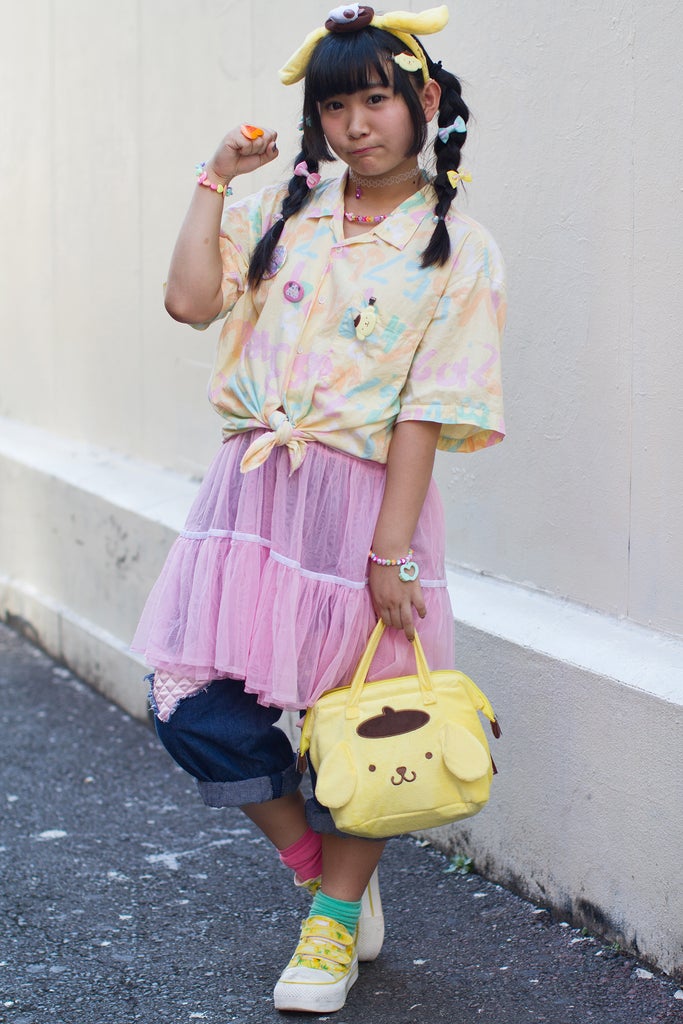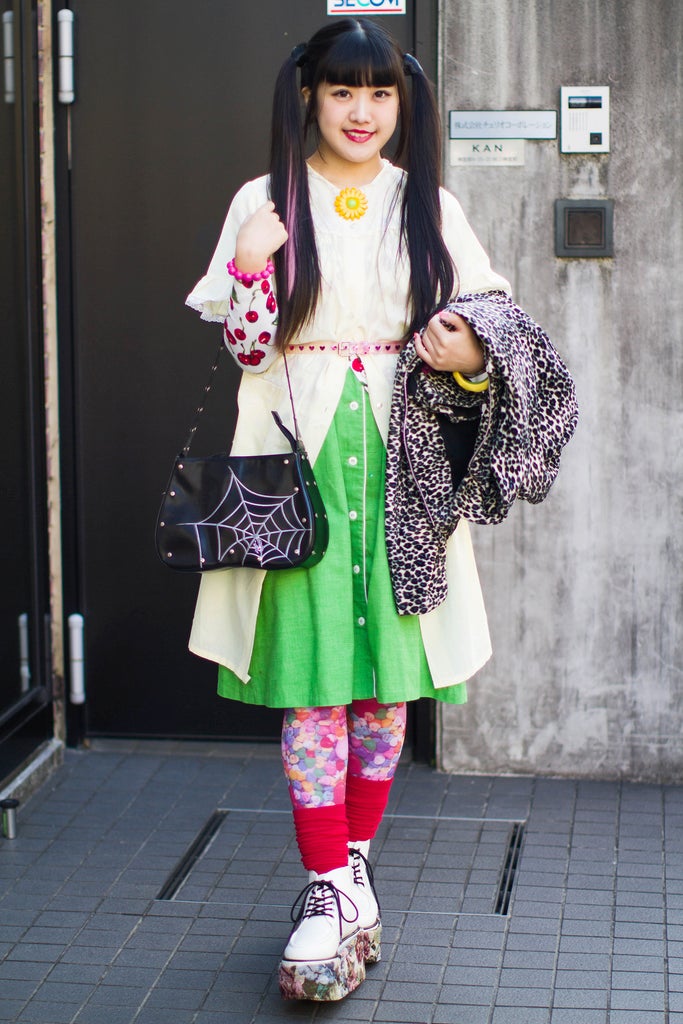Last month, creator @kaiageber chronicled in a Twitter thread a new aesthetic emerging in street style: the “weird” girl. Using photos of influencers and model Bella Hadid, the thread explored how mismatched accessories, mini skirts, fluffy details, knitted pieces, and clashing textures became the It-look of the season, seemingly throwing all the arbitrary fashion rules out the window. “Is it anti-fashion? Are people trying too hard just to look ugly?” the creator asked.
the weird girl aesthetic. is it anti-fashion? are people trying too hard just to look ugly? does it only work on bella hadid? let’s discuss pic.twitter.com/lRZZJ0JoAK
— ً (@KAlAGEBER) May 7, 2022
The phenomenon certainly embodies the state of fashion trends right now: an accelerated trend cycle led by ’90s and early 2000s styles on TikTok, where trying on core aesthetics — from cottagecore and fetishcore to clowncore and angelcore — is another way of playing dress-up. The difference? The “weird” girl seems to be trying them all at once. Think: Rainbow knitted beanies with oversized bomber jackets, knee-high socks, and the aforementioned micro mini skirts; or baby tees, paired with plaid skirts, leopard print bag, bow clips, and a beaded choker necklace. By June, the trend had grown to over 145 million views on TikTok, with fashion creators like @glitterpenperspective and Alyssa Mosley (@alyssamosley) breaking down its current popularity.


But while the trend seems to be booming now, its roots are also a product of the Y2K era. The “weird girl” aesthetic is influenced by Harajuku fashion, a style that mixes a wide set of sub-cultures within Japanese fashion that is known for its hyperfeminine aesthetic and was cemented in global pop culture thanks to publications like Fruits — a late ’90s street style magazine — back in the early 2000s. In its current form, it’s also tied to the recent rise of Heaven by Marc Jacobs, a youth brand launched in 2020 that embodies the grunge maximalism that earned the designer a name in the 90s, capitalizing on the nostalgia that’s made a new generation unearth these styles online and IRL. Take, for example, the brand’s spray painted baby tees, chunky platform boots, tulle skirts, pacifier-shaped earrings, and psychedelic graphics on everything from hoodies to sweaters and crop tops. It’s “schoolgirl” meets “rave kid.”
Yet the elements of this current trend go beyond Harajuku style, though. While the trend does embody the contrasting and fantasy-like nature of this Japanese style (which given the 20-year fashion cycle was bound to come back soon), it also derives from the reality we’ve lived over the past two years, thanks to the pandemic, and the fashion items we’ve used to cope. Think about it: Thrifting and vintage shopping have become the go-to sources of fashion, while knitting crochet tops, hats, and jackets are popular pastimes. Tie dye, a signature psychedelic print of the ’90s and early 2000s, made a triumphant comeback as many were bored during lockdown, managing their anxiety by hand-dyeing T-shirts at home. Fantasy fashion has also grown during this time, with brands like Selkie, Teuta Matoshi, and Lirika Matoshi offering dresses fit for a Disney princess (and people actually like one in their everyday lives). Victorian fashion, cottagecore, fetishcore… One aesthetic after the other promising the key to cope with a messed-up world.
@tinyjewishgirl from IG: megbeckstudio and the dress is from the store dana foley in the lower east side!!! This is my fave color palette
The trend is also influenced by a return to maximalism in fashion, following years of low-key leisurewear and neutrals. “I think that maximalism is something that absolutely found its base online in what people wore during Covid,” says Alexandra Hildredth, a TikTok fashion creator who goes by @guyfieri.superfan on the app. She points to TikTok creators like @tinyjewishgirl, who has over 800,000 followers, becoming increasingly popular for their maximalist, anything-goes approach to fashion, pairing a butterfly-shaped bag with a plaid skirt, a pink corset with a beach-ready orange maxi skirt, or a knit crop top with a horse-print silk midi skirt. “I definitely don’t think that that [the weird girl aesthetic] could have arisen without those creators […] really paving the way in maximalism because there is a logic towards the weird girl style.”
@alyssamosley_ Make sure to follow my Instagram for more content! @ccellophanee ♥️ #marcjacobsheaven ♬ original sound – alyssa mosley
But what exactly is “weird” about contrasting styles meshed together in one outfit? “I think it’s people who are not used to seeing these styles from actual subcultures who have been wearing it for years who gave it the name,” says Mosley. “Because they had never been around people that dress that way.” Some creators are also pointing out that the name ignores the trend’s roots and casts its wearers in a derogatory way. TikTok creator @glitterpenperspective said in a recent video that calling the trend “anti-fashion” because of its wear-all-at-once nature was wrong because “it’s fashion history,” referring to how Harajuku fashion paved the way for this phenomenon. Mosley also saw a wave of people upset over the name “weird girl aesthetic” in the comment section of her explainer video, and she agrees the name lacks the historical and social weight behind this trend. “Maybe it’s Fruits’ Girl Aesthetic,” she says.
After two years of an accelerated trend cycle that brews one aesthetic after the other with no end in sight, the “weird” girl emerges: She wears her cottagecore corset with her tie-dye skirt, accessorized with the Y2K-ready platform thong sandals and Minnie Mouse-branded shoulder bag, along with one too many acrylic rings and rhinestone hair pins, because she’s realized that arbitrary fashion rules have no place in our current world. If she’s “weird,” we all are, too.
Like what you see? How about some more R29 goodness, right here?
How To Dress Like A “Coastal Grandmother”
Powered by WPeMatico






